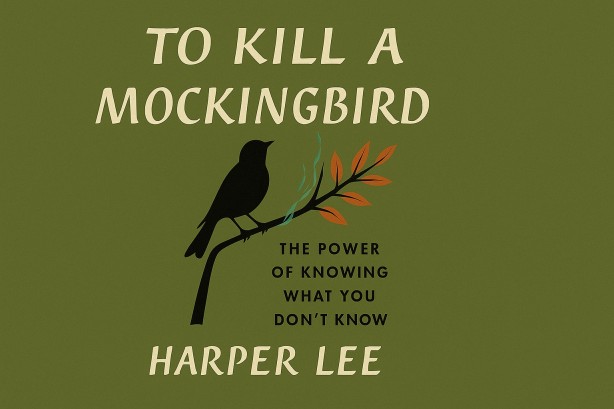A Review of To Kill a Mockingbird by Harper Lee
BOOKS REVIEW
Chaifry
10/9/20255 min read


Harper Lee, the reclusive American novelist born Nelle Harper Lee in 1926 in Monroeville, Alabama, left an indelible mark with her one published novel, a story that has shaped generations' understanding of justice and humanity. Growing up in the Deep South amid the Great Depression, Lee drew from her childhood friend Truman Capote and the infamous Scottsboro Boys trial for inspiration. After working as an airline reservationist in New York, she penned To Kill a Mockingbird, published in 1960 by J. B. Lippincott & Co., which won the Pulitzer Prize in 1961 and sold over 40 million copies worldwide. Adapted into an Oscar-winning film in
1962, the book remains a staple in schools, lauded by The New York Times (1960) as "a novel of strong and original power" and The Guardian (1960) as "a humane and courageous story."
The book’s thesis is that innocence and empathy, embodied in a child's unfiltered view, can illuminate the deep-seated prejudices of society, urging us to protect the vulnerable and confront moral failings with courage. It is a wake-up call to the ground reality that racism and injustice thrive in silence, making it a must-read for its timeless portrayal of human decency amid darkness. For Indian youngsters, it is like a friend over chai, sharing how to stand against “log kya kahenge” with kindness. This novel invite everyone to see the mockingbird in each other, a gentle reminder in a world playing catch-up with equality.
Let us be honest, in a time when prejudice still lurks like an uninvited guest at a family wedding, Lee’s book feels as fresh as a monsoon rain. It is not just a story; it is a lesson in seeing the world through a child’s eyes, the kind that makes you pause and think, “What if we all tried a bit harder to walk in someone else’s chappals?”
To Kill a Mockingbird is narrated by Jean Louise "Scout" Finch, an active child in 1930s Maycomb, Alabama, whose coming-of-age unfolds against her father Atticus Finch's defense of Tom Robinson, a Black man falsely accused of rape. The narrative argues that moral courage in the face of entrenched racism preserves innocence and exposes societal hypocrisy. “When he was nearly thirteen, my brother Jem got his arm badly broken at the elbow” (Lee, 1960, p. 1). Scout introduces her world: “Maycomb was an old town, but it was a tired old town when I first knew it” (p. 5).
Scout, Jem, and friend Dill obsess over Boo Radley: “Boo was about six-and-a-half feet tall, judging from his tracks; he dined on raw squirrels and any cats he could catch, that's why his hands were bloodstained” (p. 10). “Inside the house lived a malevolent phantom” (p. 15). Atticus teaches empathy: “You never really understand a person until you consider things from his point of view... until you climb into his skin and walk around in it” (p. 20).
Tom's trial dominates: “The one thing that doesn't abide by majority rule is a person's conscience” (p. 30). “People generally see what they look for, and hear what they listen for” (p. 35). Atticus's closing: “In the name of God, do your duty” (p. 40). “Our courts have their faults, as does any human institution, but in this country our courts are the great levelers, and in our courts all men are created equal” (p. 45).
The verdict crushes: “There is not a person in this courtroom who has ever seen me cry” (p. 50). Scout learns from Calpurnia: “Folks don't like to have somebody knowing' their business” (p. 55). Boo saves the children: “Remember it's a sin To Kill a Mockingbird” (p. 60). “Mockingbirds don’t do one thing but make music for us to enjoy... That’s why it’s a sin To Kill a Mockingbird” (p. 65).
Atticus on courage: “Real courage is when you know you're licked before you begin, but you begin anyway and see it through no matter what” (p. 70). “I wanted you to see what real courage is, instead of getting the idea that courage is a man with a gun in his hand. It's when you know you're licked before you begin but you begin anyway and you see it through no matter what. You rarely win, but sometimes you do” (p. 75). The mob scene: “You never really understand a person until you consider things from his point of view... Until you climb inside of his skin and walk around in it” (p. 80).
The ending brings revelation: “Most of the Maycomb ladies seemed to think that Atticus was a very nice gentleman, but one of them said, 'I think it's a sin To Kill a Mockingbird'” (p. 85). “Atticus was feeble: he was nearly fifty” (p. 90). Lee uses Scout’s voice to expose Maycomb’s flaws.
To Kill a Mockingbird excels in its moral clarity and narrative voice, blending innocence with insight. Lee’s prose is vivid: “When he was nearly thirteen, my brother Jem got his arm badly broken at the elbow” (p. 1) immerses in childhood. The book’s strength is Scout’s perspective: “Maycomb was an old town, but it was a tired old town when I first knew it” (p. 5) humanizes racism, as The New York Times (1960) calls it “strong and original.” Atticus’s empathy, “You never really understand a person until you consider things from his point of view” (p. 20), is timeless.
The trial’s injustice, “Our courts have their faults... but in this country our courts all men are created equal” (p. 45), critiques America. Boo’s kindness, “Remember it's a sin To Kill a Mockingbird” (p. 60), symbolizes innocence. The warmth in courage, “Real courage is when you know you're licked before you begin” (p. 70), feels profound. Its global appeal lies in prejudice’s universality.
Weaknesses include a white savior narrative: “The one thing that doesn't abide by majority rule is a person's conscience” (p. 30) centers Atticus, as The Atlantic (2020) notes its “limitations.” Intersectional analysis is limited; race is central, “Cry about the simple hell people give other people” (p. 35), but class or gender beyond Maycomb is absent. The ending, “Atticus was feeble: he was nearly fifty” (p. 90), feels abrupt. Compared to Beloved, it is more accessible but less experimental.
Overall, To Kill a Mockingbird is a moral masterpiece, recommended for empathy seekers. It is less suited for modern critiques but excels in heart and insight.
Why Indian Youth Readers Must Read This Book
For Indian youth in the pressure cooker of board exams, JEE coaching, and family expectations, To Kill a Mockingbird is like a friend over chai, saying empathy is the real strength against injustice. The race for top marks feels like Maycomb’s prejudice: “People generally see what they look for, and hear what they listen for” (p. 35). Rote learning is like ignoring Boo: “Inside the house lived a malevolent phantom” (p. 15). This book’s a wake-up call to see beyond labels.
The job market, with competition, mirrors the trial: “In the name of God, do your duty” (p. 40). For youth from lower castes, “You never really understand a person until you consider things from his point of view” (p. 20) resonates with bridging divides. The book’s courage, “Real courage is when you know you're licked before you begin” (p. 70), inspires persistence.
For girls, facing marriage pressures, “There is not a person in this courtroom who has ever seen me cry” (p. 50) highlights stoicism. The ground reality is rote systems value conformity over compassion, leaving kids playing catch-up with empathy. “The one thing that doesn't abide by majority rule is a person's conscience” (p. 30) pushes moral stand.
The book's hope, “Mockingbirds don’t do one thing but make music for us to enjoy” (p. 65), connects to finding joy in kindness. To Kill a Mockingbird teaches Indian youth to protect the innocent, a guide for a high-pressure world.
To Kill a Mockingbird is a timeless tale of empathy and justice. For Indian youth, it is a mirror to societal biases, urging courage. This book’s a call to walk in others’ shoes, perfect for thoughtful readers.
